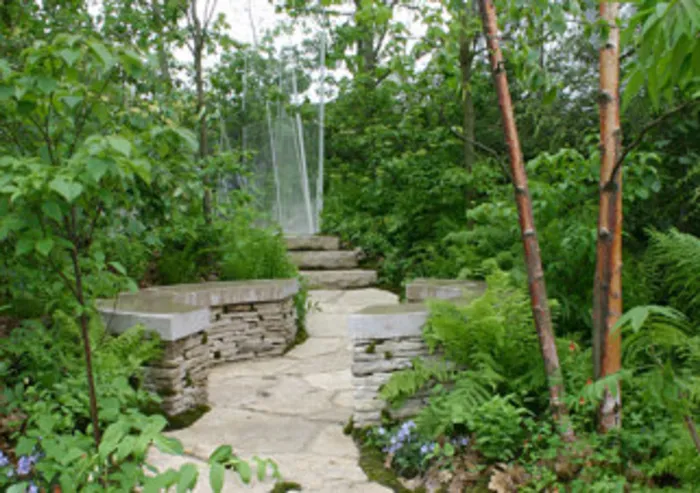A woodland wonder

Ferns, trees and a private seat developed with slate in the woodland. Picture: Kay Montgomery Ferns, trees and a private seat developed with slate in the woodland. Picture: Kay Montgomery
A woodland garden is a good place to escape into your own private retreat. A cluster of trees of modest growth underplanted with shade-loving plants gives a feeling of being in a forest glade.
A woodland garden is just a duplication of a natural scene and can be created in any garden, regardless of the size.
Creating a woodland garden sounds easy, but in fact it is difficult to create a natural atmosphere. In natural woodlands, trees and shrubs are not spaced according to their spread. The seeds of these plants drop and grow only where conditions most favour their development. For example, you may find two trees growing only a metre apart with their boles growing up at a slight angle away from each other.
There is no sequence or rhythm in the way plants grow in nature so keep this in mind when you plan your planting.
A well-manicured lawn has no place in a woodland garden. Grass may be grown but it is best left and cut only when it is about 20cm tall. For a more natural feel to your woodland garden, eliminate lawn altogether. It will not grow well under the trees and will end up looking tatty. Rather concentrate on plants that occur naturally in woodland environments such as ferns, foxgloves, narcissi, violets, primulas, clivia, white arum, ribbon bush, reeds (Cyperus spp.), tree ferns or plectranthus.
Any shade-loving plant will do well in a woodland garden.
A particularly successful indigenous woodland (3-4m in height) can be created in two years by planting a combination of keurboom (Virgilia oroboides) and wild peach (Kiggelaria africana), with other slower-growing trees – white stinkwood, Cape beech (Rapanea melanophloeos), yellowwoods (Podocarpus latifolius, P. falcatus) and Cape ash (Ekebergia capensis). Plant the trees close together, working on about three to four trees per square metre, with one keurboom or wild peach in each rough square metre block.
On the woodland floor, plant Clivia nobilis, Clivia miniata, Veltheimia bracteata, with various plectranthus species for ground cover. The seedpods and leaves of the keurboom will build up a wonderful mulch, making it resemble a real forest floor. The forest “fringes” can be planted with Protea repens, various erica species, wild sage (Salvia africana-lutea), wild rosemary (Eriocephalus africanus), as well as various smaller bulbs (sparaxis, babiana, lachenalia, and ornithogalum).
Mulch in the forest
To start, mulch the areas between plants well using bark chips, walnut shells or other organic mulches. This will ensure that as little water as possible is lost from your woodland. As the trees and annuals will compete for water, be sure to plant trees that do not have invasive roots or trees that are great water consumers such as poplars and willows. They will end up hoarding the water and your annuals will be the ones to suffer.
In a small garden, plant trees with a tall upright character that can be pruned up to create a shady canopy. Plant different types of trees, creating interest with different bark types and foliage.
Alternatively, plant a stand of one type of tree such as silver birches for a more classical look. Avoid planting trees or shrubs that cast a dense shade; favour a more dappled shade look. This will ensure enough light filters through the canopy to encourage plants to grow beneath.
Water in the form of a small stream or a reflection pool will complete your woodland garden. It will add to the feeling of cool, quiet and restful outdoors that you are trying to create.
Plant clivias, arums or fuchsias around your water feature and imagine the fairies that will take up residence in your garden. - Saturday Star